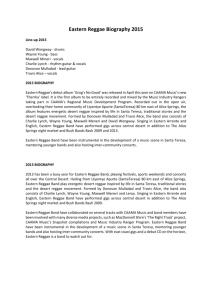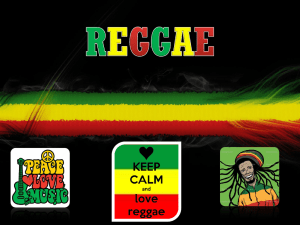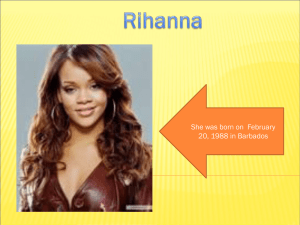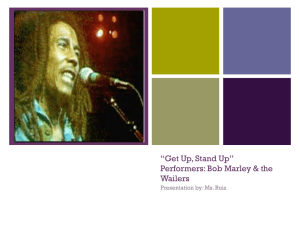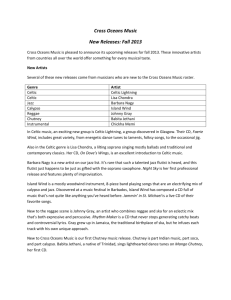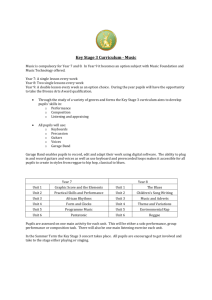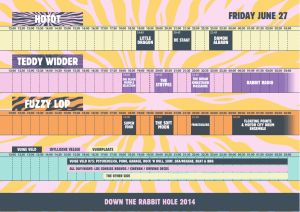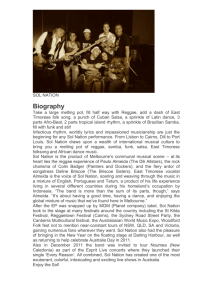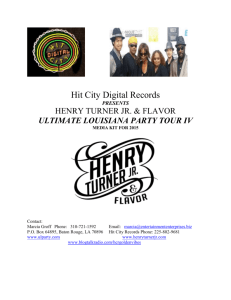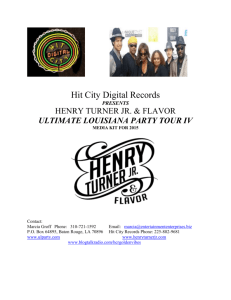Chapter 11 Curriculum grid
advertisement
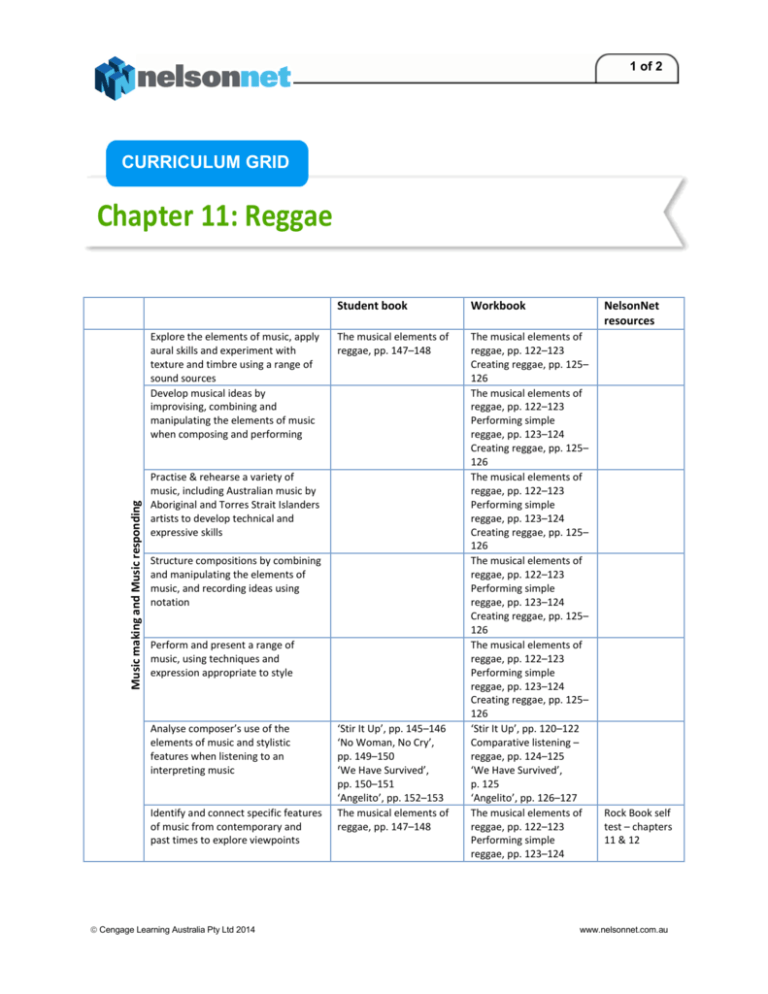
1 of 2 CURRICULUM GRID Chapter 11: Reggae Music making and Music responding Explore the elements of music, apply aural skills and experiment with texture and timbre using a range of sound sources Develop musical ideas by improvising, combining and manipulating the elements of music when composing and performing Student book Workbook The musical elements of reggae, pp. 147–148 The musical elements of reggae, pp. 122–123 Creating reggae, pp. 125– 126 The musical elements of reggae, pp. 122–123 Performing simple reggae, pp. 123–124 Creating reggae, pp. 125– 126 The musical elements of reggae, pp. 122–123 Performing simple reggae, pp. 123–124 Creating reggae, pp. 125– 126 The musical elements of reggae, pp. 122–123 Performing simple reggae, pp. 123–124 Creating reggae, pp. 125– 126 The musical elements of reggae, pp. 122–123 Performing simple reggae, pp. 123–124 Creating reggae, pp. 125– 126 ‘Stir It Up’, pp. 120–122 Comparative listening – reggae, pp. 124–125 ‘We Have Survived’, p. 125 ‘Angelito’, pp. 126–127 The musical elements of reggae, pp. 122–123 Performing simple reggae, pp. 123–124 Practise & rehearse a variety of music, including Australian music by Aboriginal and Torres Strait Islanders artists to develop technical and expressive skills Structure compositions by combining and manipulating the elements of music, and recording ideas using notation Perform and present a range of music, using techniques and expression appropriate to style Analyse composer’s use of the elements of music and stylistic features when listening to an interpreting music Identify and connect specific features of music from contemporary and past times to explore viewpoints Cengage Learning Australia Pty Ltd 2014 ‘Stir It Up’, pp. 145–146 ‘No Woman, No Cry’, pp. 149–150 ‘We Have Survived’, pp. 150–151 ‘Angelito’, pp. 152–153 The musical elements of reggae, pp. 147–148 NelsonNet resources Rock Book self test – chapters 11 & 12 www.nelsonnet.com.au 2 of 2 Student book Workbook NelsonNet resources Cross- curriculum priorities Creating reggae, pp. 125– 126 Sustainability Aboriginal and Torres Strait Islanders histories and cultures General capabilities Literacy Australian reggae, p. 150 ‘We Have Survived’, pp. 150–151 Complete chapter, pp. 143–154 ‘We Have Survived’, p. 125 Reggae revision, pp. 127– 128 Research projects in reggae, p. 128 Comparative listening – reggae, pp. 124–125 Research projects in reggae, p. 128 Critical and creative thinking Discussion topics in reggae, p. 154 Numeracy The musical elements of reggae, pp. 147–148 The musical elements of reggae, pp. 122–123 Performing simple reggae, pp. 123–124 Creating reggae, pp. 125– 126 Research projects in reggae, p. 128 Background and history, pp. 143–144 Star spot – Bob Marley, pp. 144–145 Rasta culture, pp. 148– 149 Australian reggae, p. 150 Reggae blends, p. 151 Discussion topics in reggae, p. 154 Comparative listening – reggae, pp. 124–125 Research projects in reggae, p. 128 ICT competence Intercultural understanding Personal and social competence Ethical behaviour Cengage Learning Australia Pty Ltd 2014 Discussion topics in reggae, p. 154 Rock Book self test – chapters 11 & 12 Rock Book self test – chapters 11 & 12 The musical elements of reggae, pp. 122–123 Performing simple reggae, pp. 123–124 Creating reggae, pp. 125– 126 Research projects in reggae, p. 128 Research projects in reggae, p. 128 www.nelsonnet.com.au
